1. Williams PL. Gray's anatomy. 38th ed. London: Churchill Livingstone;1995. p. 602.
2. Njio BJ, Kjaer I. The development and morphology of the incisive fissure and the transverse palatine suture in the human fetal palate. J Craniofac Genet Dev Biol. 1993; 13:24–34.
3. Vacher C, Sakka M, Dauge MC. Incisive suture (fissure) in the human fetus: radiologic and histologic study. Cleft Palate Craniofac J. 2001; 38:330–336.
4. Barteczko K, Jacob M. A re-evaluation of the premaxillary bone in humans. Anat Embryol (Berl). 2004; 207:417–437.
5. Melsen B, Melsen F. The postnatal development of the palatomaxillary region studied on human autopsy material. Am J Orthod. 1982; 82:329–342.
6. Silau AM, Njio B, Solow B, Kjaer I. Prenatal sagittal growth of the osseous components of the human palate. J Craniofac Genet Dev Biol. 1994; 14:252–256.
7. Rojvachiranonda N, Tansatit T, Siriwan P, Mahatumarat C. Normal palatal sutures in newborns and fetuses: a critical fact for successful palatal distraction. J Craniofac Surg. 2003; 14:457–461.
8. Radlanski RJ, Emmerich S, Renz H. Prenatal morphogenesis of the human incisive canal. Anat Embryol (Berl). 2004; 208:265–271.
9. Kim JH, Oka K, Jin ZW, Murakami G, Rodríguez-Vázquez JF, Ahn SW, Hwang HP. Fetal development of the incisive canal, especially of the delayed closure due to the nasopalatine duct: a study using serial sections of human fetuses. Anat Rec (Hoboken). 2017; 300:1093–1103.
10. Wood PJ, Kraus BS. Prenatal development of the human palate. Some histological observations. Arch Oral Bio. 1962; 7:137–150.
11. Kim JH, Jin ZW, Shibata S, Yang JD, Murakami G, Rodríguez-Vázquez JF, Cho BH. Fetal development of human oral epithelial pearls with special reference to their stage-dependent changes in distribution. Cleft Palate Craniofac J. 2017; 54:295–303.
12. Kitamura H. Evidence for cleft palate as a postfusion phenomenon. Cleft Palate Craniofac J. 1991; 28:195–210.
13. Arnold WH, Rezwani T, Baric I. Location and distribution of epithelial pearls and tooth buds in human fetuses with cleft lip and palate. Cleft Palate Craniofac J. 1998; 35:359–365.
14. Kjaer I. Prenatal skeletal maturation of the human maxilla. J Craniofac Genet Dev Biol. 1989; 9:257–264.
15. Kumoi T, Nishimura Y, Shiota K. The embryologic development of the human anterior nasal aperture. Acta Otolaryngol. 1993; 113:93–97.
16. Sandikcioglu M, Mølsted K, Kjaer I. The prenatal development of the human nasal and vomeral bones. J Craniofac Genet Dev Biol. 1994; 14:124–134.
17. Carstens MH. Development of the facial midline. J Craniofac Surg. 2002; 13:129–187.
18. Hansen L, Nolting D, Holm G, Hansen BF, Kjaer I. Abnormal vomer development in human fetuses with isolated cleft palate. Cleft Palate Craniofac J. 2004; 41:470–473.
19. Neves FS, Crusoé-Souza M, Franco LC, Caria PH, Bonfim-Almeida P, Crusoé-Rebello I. Canalis sinuosus: a rare anatomical variation. Surg Radiol Anat. 2012; 34:563–566.
20. Neves FS, Oliveira LK, Ramos Mariz AC, Crusoé-Rebello I, de Oliveira-Santos C. Rare anatomical variation related to the nasopalatine canal. Surg Radiol Anat. 2013; 35:853–855.
21. von Arx T, Lozanoff S, Sendi P, Bornstein MM. Assessment of bone channels other than the nasopalatine canal in the anterior maxilla using limited cone beam computed tomography. Surg Radiol Anat. 2013; 35:783–790.
22. Etoz M, Sisman Y. Evaluation of the nasopalatine canal and variations with cone-beam computed tomography. Surg Radiol Anat. 2014; 36:805–812.
23. Sekerci AE, Buyuk SK, Cantekin K. Cone-beam computed tomographic analysis of the morphological characterization of the nasopalatine canal in a pediatric population. Surg Radiol Anat. 2014; 36:925–932.
24. Fernández-Alonso A, Suárez-Quintanilla JA, Rapado-González O, Suárez-Cunqueiro MM. Morphometric differences of nasopalatine canal based on 3D classifications: descriptive analysis on CBCT. Surg Radiol Anat. 2015; 37:825–833.
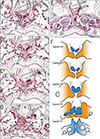
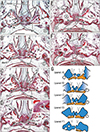
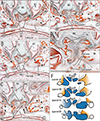
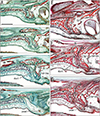
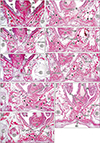

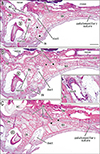




 PDF
PDF ePub
ePub Citation
Citation Print
Print





 XML Download
XML Download